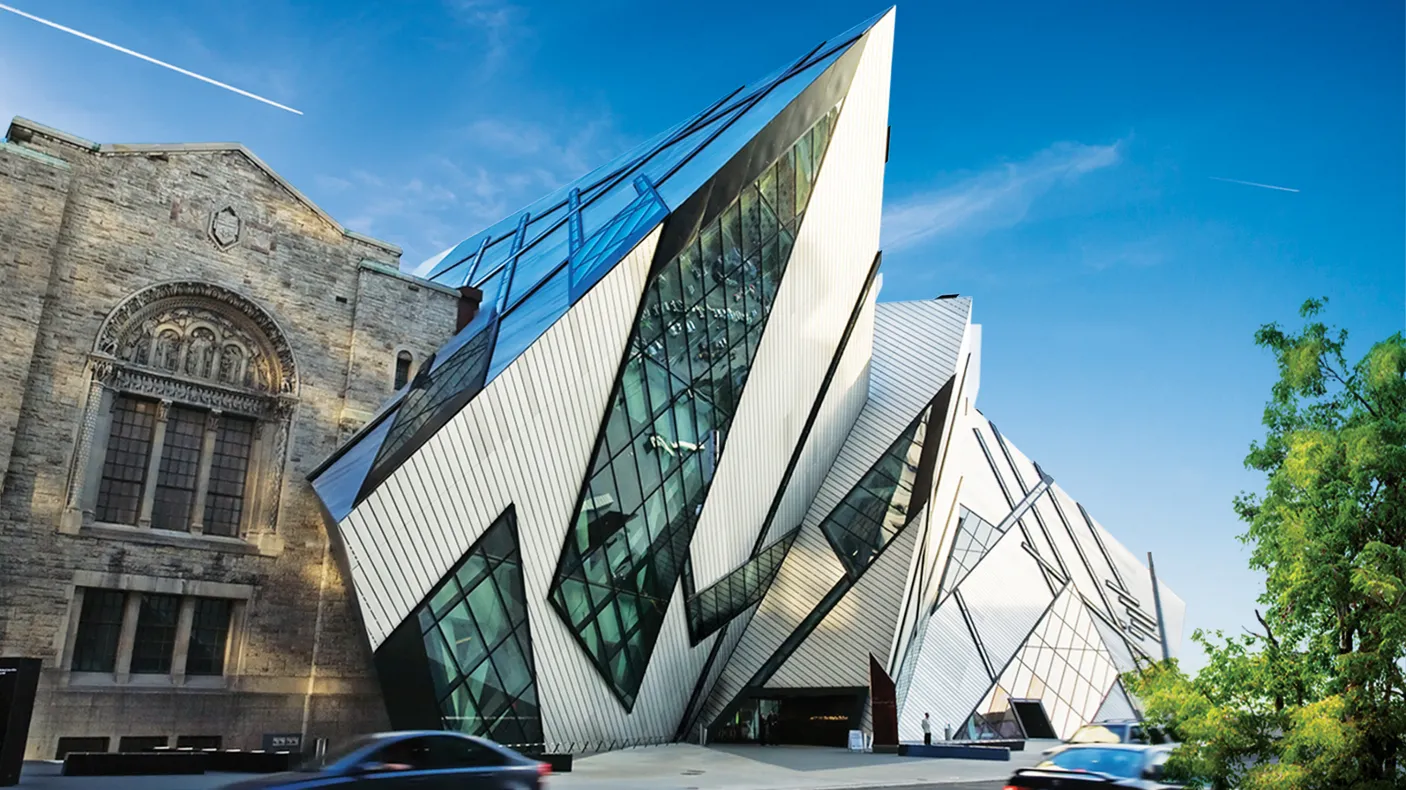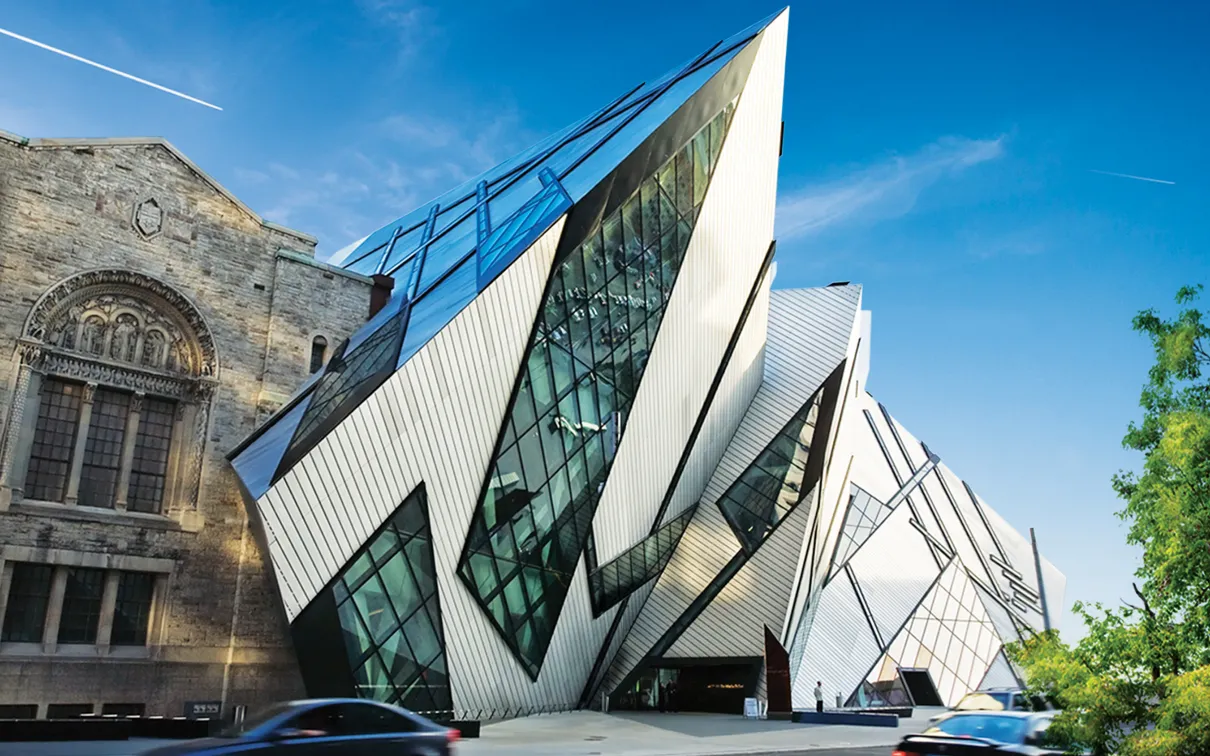Shreyas and Mina Ajmera Gallery of Africa, the Americas and Asia-Pacific opens April 5, 2008
Published
Category
Press Release
First permanent gallery of the world’s indigenous cultures
features 1,400 rarely-seen artifacts
The Royal Ontario Museum (ROM) is pleased to present the Shreyas and Mina Ajmera Gallery of Africa, the Americas and Asia-Pacific on April 5, 2008 in the Michael Lee-Chin Crystal. Named in honour of Shreyas and Mina Ajmera, in appreciation of their generous support of Renaissance ROM and the Royal Ontario Museum, this Level 3 gallery will highlight the ROM’s vast and diverse collections that represent the artistic and cultural traditions of indigenous peoples from Africa, the American continents, the Asia-Pacific region and Oceania. This is the first permanent home for these collections in over 30 years, with many of the more than 1,400 artifacts on display for the first time.
Spanning nearly 2,000 years, the artifacts reveal aspects of spiritual and everyday life, clothing, commerce, sacred and secular ritual, and art of indigenous cultures. Divided into four geographical areas, the Ajmera Gallery’s themes are based on the strengths of the ROM’s extensive World Cultures collections. Rich with symbols of heritage and identity that continue to have meaning today, this gallery presents objects ranging from large and dramatic ceremonial masks and colourful robes to archaeological objects such as ceramics and basketry. The collections were gathered between the late 19th century to the present and represent some of the Museum’s founding collections.
“We are pleased to give a new and permanent home to these significant World Cultures collections,” said William Thorsell, the ROM’s Director and CEO. “Our curatorial team, working closely with its advisory committees from many of the diverse areas represented in the gallery, has chosen spectacular and important pieces to illustrate the cultural traditions of indigenous peoples from around the world.”
"Toronto is a great city and we want to see it become even greater," said Shreyas Ajmera, ROM Governor, Founder, Seenergy Foods Ltd. “We believe the ROM has created an architectural landmark in the Michael Lee-Chin Crystal and our family is so pleased to be associated with this spectacular new gallery.”
“The opening of this new gallery is an occasion for celebration. It has enabled us to bring old collections out of storage and present new acquisitions and research,” said Trudy Nicks, Senior Curator of Anthropology in the ROM’s World Cultures Department and the coordinating curator for this gallery. “The creation of the Ajmera Gallery has been - and continues to be - a catalyst for developing creative working relationships between the Museum and the communities represented by the rich array of objects and imagery that will soon be on public view.”
"As inaugural season sponsor of the Lee-Chin Crystal, we are proud to be part of this exciting year for the ROM," said Gerry McCaughey, President and Chief Executive Officer of CIBC. "We are pleased to play a role in bringing the Shreyas and Mina Ajmera Gallery of Africa, the Americas and Asia-Pacific to the public."
Gallery Highlights:
A significant object from each section is on display at the two entrances to the gallery. Visitors entering that gallery through the Lee-Chin Crystal will encounter a 152-cm tall (60-inch) Sejien hornbill figure from the African Senufo people of the Ivory Coast and ancestral flutes from Papua New Guinea. Next to the east entrance that links this gallery to the Samuel European Galleries in the Museum’s 1933 Galen and Hilary Weston Wing, visitors will find a colourful Bolivian Diablada, the Devil Dance mask, a backpack with rainshield made from palm leaf stalks and used by the Bontoc Igorot peoples of the Philippines, and a pre-contact gold frog pendant from the Gran Coclé people of Panama. A bridge on the west of this angular-shaped gallery links it to the Sir Christopher Ondaatje South Asian Gallery and the Wirth Gallery of the Middle East.
Visible from the Lee-Chin Crystal entrance on the gallery’s west side is a four-metre high (13-ft) Sirige mask. This beautiful piece, worn by the Dogon people of Mali during annual ceremonies and funerals, is among many of the spectacular objects in the section entitled Africa: Themes and Collections. More than 400 diverse objects from the ROM’s African collections explore the creative traditions, representations of power, everyday life and architecture, spiritual life and the ideas of community that connect the different regions of the continent. A wide range of objects, including carved stools, masks, headdresses, clothing, tapestry, weapons, crowns and hats, illustrate function, as well as offer a deeper understanding of the historical and contemporary creative traditions that are specific to each culture. A section featuring beadwork by the Ndebele people of South Africa emphasizes the various life stages of men and women, with objects such as beaded bands worn across the chest during male initiation and a woman’s bridal train and veil. Beadwork and traditional creative skills are also applied to contemporary pieces such as the beaded tapestry by a South African woman artist depicting the first free elections in 1994.
“The African section is a dense and rich exhibit, featuring both historical and contemporary objects. While many of the themes create connections between cultures from all over the continent, individual pieces are visual statements of the extraordinary diversity of African artistic traditions,” Dr. Silvia Forni, Associate Curator in the Anthropology Section of the ROM’s Department of World Cultures. “Many of these objects have only been shown in temporary exhibitions and it is very exciting to see Africa become a permanent part of the multifaceted cultural offering at the ROM.”
The gallery’s northeast corner is devoted to the Americas, excluding Canada, whose aboriginal heritage is explored in the Daphne Cockwell Gallery of Canada: First Peoples on Level 1. Organized geographically, this section explores the rich cultural diversity of indigenous peoples from the northwestern U.S. seaboard to the tip of South America. The artifacts, archaeological and ethnographic, are grouped within this framework by culture and theme. These collections range in age from ancient Nasca material from about AD 300 to the 20th century objects and many illustrate the fusion of ancient Indian traditions and colonial influences. The Americas section also presents elaborate costumes in the Scotiabank Group Exhibit of Mexico & Central America and intricate basketry from the Southwest U.S. Beautiful ceramics from the Andes, spectacular feathered regalia from the Kayapó of the Brazilian rainforest and a rare collection of early 20th century objects from the Mapuche of southern Chile are on display in the Scotiabank Group Exhibit of South America.
"It is particularly satisfying to bring out the Latin American ethnographic material, since only small segments have ever been displayed in the ROM,” said Arni Brownstone, Assistant Curator in the ROM’s Department of World Cultures. “Surprisingly, the large majority of the museum’s ethnographic artifacts from that region were made within in the last 50 years. This, coupled with the fact that they depict lifeways so different from our own, make these objects profoundly interesting."
“Our archaeological collections allow visitors a glimpse into the ancient cultures of the Americas through the artifacts that they left behind,” said Dr. Justin Jennings, Associate Curator of New World Archaeology in the Anthropology Section of the ROM’s Department of World Cultures. “The designs of swirling spirits on Mimbres pots, the intense gaze of a woman starring out at us from a Zapotec effigy vessel, and the bundle of knotted cords that helped the Incas administer their far-flung empire all help us to understand how these early Americans experienced the world around them.”
The Asia-Pacific region brings together close to 300 objects based largely on three important collections gathered between 1888 and 1904. The artistry and rich spiritual life of the Ainu people of Japan can be seen through examples of men’s wood carving and women’s weaving. Garment making is one of the most widely recognizable forms of Ainu art and this section features three beautiful robes – one made of woven elm bark fibre and two garments made from cotton and embroidered appliqué. Another area explores the late 19th century life styles of the peoples of the Philippines from the islands of Luzon, the Visayas and Mindinao. This collection was acquired by the University of Toronto from exhibits at the 1904 St. Louis World's Fair. Some of these objects still bear tags and labels that trace the history of the collection from the Philippines to St. Louis to Toronto. Also presented here is historical and modern material from two indigenous groups from northern Taiwan - the Tayal and the Plains Aboriginal people. This collection was brought to Toronto by Dr. George Leslie MacKay in 1894 and represents some of the oldest surviving materials of these cultures. Visitors can view a selection of hunting gear, clothing and personal possessions of the Tayal, who were headhunters at this time. Objects from the Plains Aboriginal people reflect the Chinese influence in the clothing and marriage customs, as seen in a bride’s necklace that bears auspicious Chinese sayings.
“The century-old collections from the Philippines, Taiwan and Ainu are valuable windows into the 19th century lifestyles of these peoples, but it is also important to recognize the links between past and present when looking at the exhibits,” said Trudy Nicks, the ROM’s Senior Curator of Anthropology. “The earlier identities and cultural practices represented in the old collections are now being revitalized and old technologies are being successfully adapted to supply both local needs and world markets. Today the ancient achievements of these peoples are finally being recognized as, for example, in the designation of the Philippines Ifugao rice terraces as a UNESCO World Heritage Site.”
The section devoted to Oceania delves into some of the most linguistically and culturally diverse regions of the world where waves of migration beginning more than 50,000 years ago began populating Melanesia, Micronesia and Polynesia. Illustrating the continuity and adaptation of traditions, the objects explore ceremony, conflict, trade and exchange, and celebrating life’s transitions. Visitors will learn about the Kula Ring, a ceremonial exchange network along the island communities of the Massim peoples of Papua New Guinea, through beautiful examples of shell bracelets and necklaces, some of the most valuable items exchanged. Also on display are masks, totems and other art by the Sepik people of Papua New Guinea, elaborate wood carvings by the Maori, and traditional and contemporary bark paintings by Australian Aborigines, the world’s oldest continuing civilization with its religious traditions spanning more than 80,000 years.
“The Oceania exhibits include some of the least studied and most fragile materials in the ROM's collections,” added Dr. Nicks. “Thanks to the assistance of outside experts and the skilful work of our own conservators, the objects now appear in all of their wonderful visual complexity. Through them we can begin to appreciate the richness of the cultures of the peoples of Melanesia, Micronesia and Polynesia.”
In addition to the opening of the Ajmera Gallery of Africa, the Americas and Asia-Pacific, on April 16, 2008, the ROM will unveil the Patricia Harris Gallery of Textiles & Costume on the Lee-Chin Crystal’s Level 4 (see news release “Patricia Harris Gallery of Textiles & Costume Opens on April 16, 2008”). Drawing from the Museum’s rich collection of 50,000 textile and costume artifacts, this spacious gallery features approximately 200 outstanding pieces, illustrating the remarkable and marvelous transformations in textile design and manufacturing that have taken pace over the past three millennia. The opening of this gallery will complete the permanent collection galleries of the Lee-Chin Crystal.


